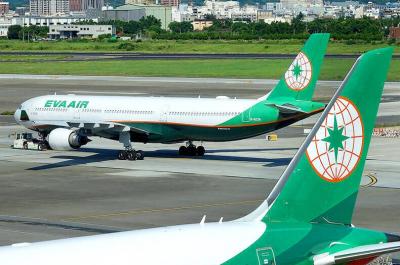The navy is proposing to upgrade its Phalanx close-in weapons systems to the same standard as the US navy, defense sources said yesterday.
The upgrade would add anti-surface capabilities to the navy arsenal, sources said.
The US-made Phalanx system is the navy's most effective and ultimate defense against hostile air targets, including aircraft and missiles.
After the upgrade, the system will be able to engage small boats approaching at high speed, a scenario that has become more tangible in the wake of the Sept. 11, 2001, terror attacks on the US.
The navy is currently completing paperwork for the upgrade plan, after which a budget request will be formulated.
The upgrade project is estimated to cost around US$50 million (NT$1.65 billion) and take several years to complete.
The project was first proposed more than three years ago when Chief of the General Staff Admiral Lee Jye (
Lee did not approve the proposal, but the situation changed after he completed his term as navy commander-in-chief and rose to the military's top post two years ago.
The navy started using the Phalanx system in 1986. The first ships to be equipped with the system were seven Yang-class destroyers, also known as "Wuchin No. 3," named after the on-board weapons system of the same name.
Other vessels relying on the Phalanx system as a final defense against air targets are the domestically built Chengkung-class frigates and second-generation fighting ships, including the French-built Lafayette and US-made Knox frigates.
A deadly misfiring occurred in 1994 during exercises when a Chengkung-class frigate shot down a plane towing its intended target.
The Phalanx was apparently activated too early, causing its radar to lock onto the plane rather than the target behind it.
Three people on board were killed. All were civilians.
The accident was a bitter lesson for the navy, which later stopped using manned planes during targeting exercises for the Phalanx.
Instead, it uses remote-control target drones, which are safer but more expensive.
Erich Shih (施孝瑋), a senior editor with Defense International magazine, said the newest version of the Phalanx system is the Block 1B, which has passed intensive field tests and is being launched on major fighting ships in the US navy, including AEGIS-class vessels.
"The main difference between the old Phalanx and the new one is that the latter is capable of engaging surface targets, mainly fast boats. The new system has an optical sight to do the job. The old system is guided only by radar," Shih said.
The navy had been considering the purchase of a similar weapons system developed in Europe, known as the "goalkeeper," because it offered both anti-surface and anti-air capabilities long before the Phalanx.
But purchasing arms from Europe faced more obstacles, which was a primary reason for the navy choosing the US option.

The first global hotel Keys Selection by the Michelin Guide includes four hotels in Taiwan, Michelin announced yesterday. All four received the “Michelin One Key,” indicating guests are to experience a “very special stay” at any of the locations as the establishments are “a true gem with personality. Service always goes the extra mile, and the hotel provides much more than others in its price range.” Of the four hotels, three are located in Taipei and one in Taichung. In Taipei, the One Key accolades were awarded to the Capella Taipei, Kimpton Da An Taipei and Mandarin Oriental Taipei. Capella Taipei was described by

EVA Airways today confirmed the death of a flight attendant on Saturday upon their return to Taiwan and said an internal investigation has been launched, as criticism mounted over a social media post accusing the airline of failing to offer sufficient employee protections. According to the post, the flight attendant complained of feeling sick on board a flight, but was unable to take sick leave or access medical care. The crew member allegedly did not receive assistance from the chief purser, who failed to heed their requests for medical attention or call an ambulance once the flight landed, the post said. As sick

The Taichung District Court yesterday confirmed its final ruling that the marriage between teenage heir Lai (賴) and a man surnamed Hsia (夏) was legally invalid, preventing Hsia from inheriting Lai’s NT$500 million (US$16.37 million) estate. The court confirmed that Hsia chose not to appeal the civil judgement after the court handed down its ruling in June, making the decision final. In the June ruling, the court said that Lai, 18, and Hsia, 26, showed “no mutual admiration before the marriage” and that their interactions were “distant and unfamiliar.” The judge concluded that the couple lacked the “true intention of

INDUSTRY: Beijing’s latest export measures go beyond targeting the US and would likely affect any country that uses Chinese rare earths or related tech, an academic said Taiwanese industries could face significant disruption from China’s newly tightened export controls on rare earth elements, as much of Taiwan’s supply indirectly depends on Chinese materials processed in Japan, a local expert said yesterday. Kristy Hsu (徐遵慈), director of the Taiwan ASEAN Studies Center at the Chung-Hua Institution for Economic Research, said that China’s latest export measures go far beyond targeting the US and would likely affect any country that uses Chinese rare earths or related technologies. With Japan and Southeast Asian countries among those expected to be hit, Taiwan could feel the impact through its reliance on Japanese-made semi-finished products and